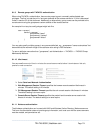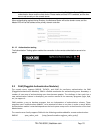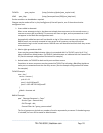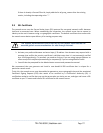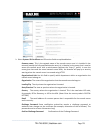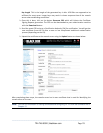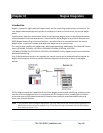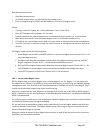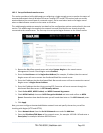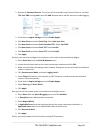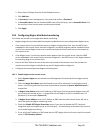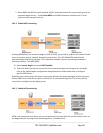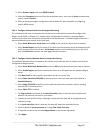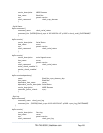Distributed console servers
Black Box console servers.
Serial and network hosts are attached to each console server.
Each runs Nagios plug-ins, NRPE, and NSCA add-ons, but not a full Nagios server.
Clients
Typically a client PC, laptop, etc., running Windows, Linux, or Mac OS X.
Runs SDT Connector client software 1.5.0 or later.
Possibly remote to the central Nagios server or distributed console servers (i.e. a road warrior).
May receive alert emails from the central Nagios server or distributed console servers.
Connects to the central Nagios server web UI to view status of monitored hosts and serial devices.
Uses SDT Connector to connect through the console servers to manage monitored hosts and serial
devices.
SDT Nagios setup involves the following steps:
i. Install Nagios and the NSCA and NRPE add-ons on the central Nagios server (Section 10.2.1—Set
up central Nagios server).
ii. Configure each Black Box distributed console server for Nagios monitoring, alerting, and SDT
Nagios integration (Section 10.2.2— Set up distributed Black Box servers).
iii. Run the SDT for Nagios Configuration Wizard on the central Nagios server (Section 10.2.3— Set
up SDT Nagios on central Nagios server) and perform any additional configuration tasks.
iv. Install SDT Connector on each client (Section 10.2.4—Set up clients).
10.2.1 Set up central Nagios server
SDT for Nagios requires a central Nagios server running Nagios 2.x or 3.x. Nagios 1.x is not supported.
The Nagios server software is available for most major distributions of Linux using the standard package
management tools. Your distribution will have documentation available on how to install Nagios. This is
usually the quickest and simplest way to get up and running.
Note that you will need the core Nagios server package, and at least one of the NRPE or NSCA add-ons.
NSCA is required to use the alerting features of the Black Box distributed hosts, installing both NRPE and
NSCA is recommended.
You will also require a web server such as Apache to display the Nagios web UI (and this may be installed
automatically depending on the Nagios packages).
Or, you may wish to download the Nagios source code directly from the Nagios website, and build and
install the software from scratch. The Nagios website (http://www.nagios.org) has several Quick Start
Guides that walk through this process.
Once you are able to browse to your Nagios server and see its web UI and the local services it monitors
by default, you are ready to continue.
_____________________________________________________________________
724-746-5500 | blackbox.com Page 182



